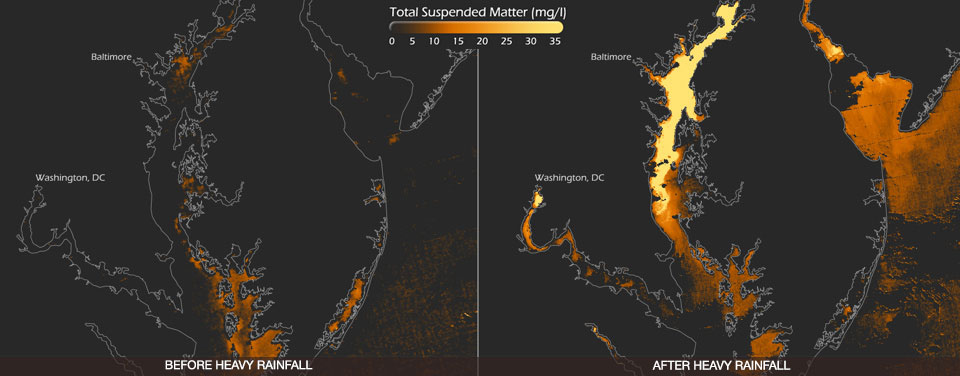What is nutrient pollution?
Nutrient pollution is the process where too many nutrients, mainly nitrogen and phosphorus, are added to bodies of water and can act like fertilizer, causing excessive growth of algae.

Nutrients can run off of land in urban areas where lawn and garden fertilizers are used. Pet and wildlife wastes are also sources of nutrients. To see how this happens, consider this visualization of the Chesapeake Bay, part of the largest watershed in the Northeast. This illustration shows the amount of suspended matter (e.g., silt, mud, debris) in waterways before (left) and after (right) areas in this region received exceptionally heavy rainfall in 2011. All of this rain and runoff eventually made its way into the Chesapeake Bay.
This process is also known as eutrophication. Excessive amounts of nutrients can lead to more serious problems such as low levels of oxygen dissolved in the water. Severe algal growth blocks light that is needed for plants, such as seagrasses, to grow. When the algae and seagrass die, they decay. In the process of decay, the oxygen in the water is used up and this leads to low levels of dissolved oxygen in the water. This, in turn, can kill fish, crabs, oysters, and other aquatic animals.
Nutrients come from a variety of different sources. They can occur naturally as a result of weathering of rocks and soil in the watershed and they can also come from the ocean due to mixing of water currents. Scientists are most interested in the nutrients that are related to people living in the coastal zone because human-related inputs are much greater than natural inputs. Because there are increasingly more people living in coastal areas, there are more nutrients entering our coastal waters from wastewater treatment facilities, runoff from land in urban areas during rains, and from farming.
All of these factors can lead to increased nutrient pollution.